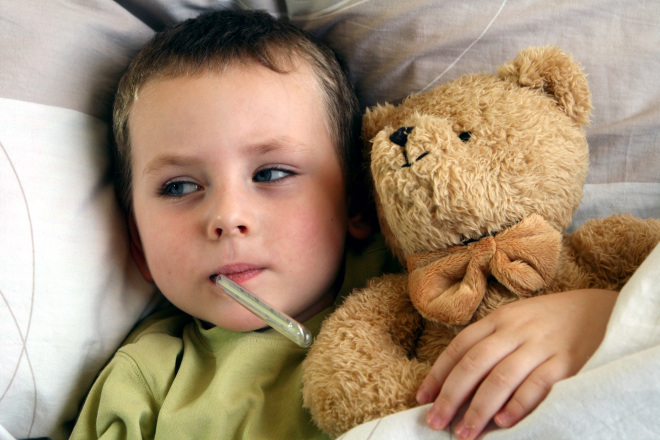Homeostasis refers to the natural ability to adjust and maintain our body temperature within a normal range. If the body temperature gets too high or too low, it usually indicates a problem. However, we hear about fevers and spiking body temperatures a lot, but hardly enough about low temperature in children. A sudden drop in the body temperature is a reason for worry and requires quick attention. It is more important to ascertain the cause of the drop in temperature since this cause will have more bearing on your little darling’s health. Here are a few things you need to know in relation to low body temperature.
What Is Normal Body Temperature in Children?
All kids have their own thermostats. While the average body temperature is 98.6˚F (37˚C), your kid’s normal temperature might run a little higher or lower. Usually, your kid’s temperature can vary 0.6˚Fabove or below the average, depending on how active he/she has been through the day. To determine your little one’s temperature, you can take either an oral, ear, rectal or armpit temperature with a calibrated thermometer. While the armpit records temperature a little lower, the oral temperature tends to be a little higher. A rectal reading, on the other hand, is the most accurate one.
For more information on how to take a child’s temperature, please watch a video:
What Does Low Temperature in Children Indicate?
Low temperature in children can be pointers to quite a few health conditions. It is a symptom of some underlying problem that your little one is suffering from. To ascertain the problem, you must consider the following situations:
Colds, Fever Medicationand Infections
If low temperature in your little one is a sudden development, it may have resulted from his cold surroundings, a cold or the flu. It could also be resulting from sideeffects of his fever medication. In children with generally weaker immunity, low temperature can be the result of infections.
Neurological Issues
Some kids, especially those with neurological issues can experience low body temperatures as a recurring symptom. They may have normal temperature in the day, but it routinely drops every night. Normally, this is no cause for concern as long as the body temperature is over 95˚F (35˚C).However, low temperature in children can make your little one uncomfortable and have disturbed sleep. In other children, however, it can set off a cascade of other problems like slowing down his/her heart rate. If your child is showing chronic signs of low temperature, know that there is need to probe into the matter.
Deficiencies
What you eat impacts your body greatly, and body temperature has a great bearing to this. You will notice that when your kid is hungry, he will inevitably be running a slightly lower temperature. Also, deficiencies of iodine, iron, and other important nutrients can also cause your little one to have a low temperature. Chronic illness like hypothyroidism and anemia can reduce your kid’s average body temperature.
When Should I Take My Child to the Doctor?
Any child experiencing body temperature below 95˚F (35˚C) needs immediate medical attention. Low temperature in children to this extent can lead to serious problems like organ failure. You have to remember that thermometers cannot generally record temperature once it dips below 93˚F(33.9˚C), making it difficult to get an accurate reading when your kid is running a low temperature. However, there are special thermometers available for this situation that help get a reading.
If your child generally runs a low temperature between 90˚F(32.2˚C) and 95˚F(35˚C), he/she should be examed and evaluated by a doctor to make sure it’s not caused by a medical condition.
There are also children who experience low temperature owing to tiredness or minor illness. These cases are not particularly worrisome. However, if infections accompany a low temperature in children, then the temperature dip acts as a marker to narrow down on the infection. It is important to follow up the diagnosis with blood and urine tests and careful monitoring.
How Is Low Temperature In Children Treated?

- You can begin by changing your little one’s diet. He/she needs more wholesome and nutritious food. Once you can successfully make up for the nutritional deficit, your child will begin to lose his/her sluggishness as well as raise the body temperature to normal.
- Wearing warm clothes and woolens also helps bring positive change to body temperature. Warm foods like soups and milk also have a soothing effect on children.
- However, if the dipping temperature is a chronic recurrence, it is best to take it up with your pediatrician and follow his advice. Timely intervention is of utmost importance. The chances of a good prognosis ensure higher chances of complete recovery. The primary objective of your doctor will be to raise your child’s body temperature to normal. Later, he will want to run tests and further decisions regarding treatment will depend on the results of these tests. During all that time, be supportive of your child, and remind him/her that all will be well.
